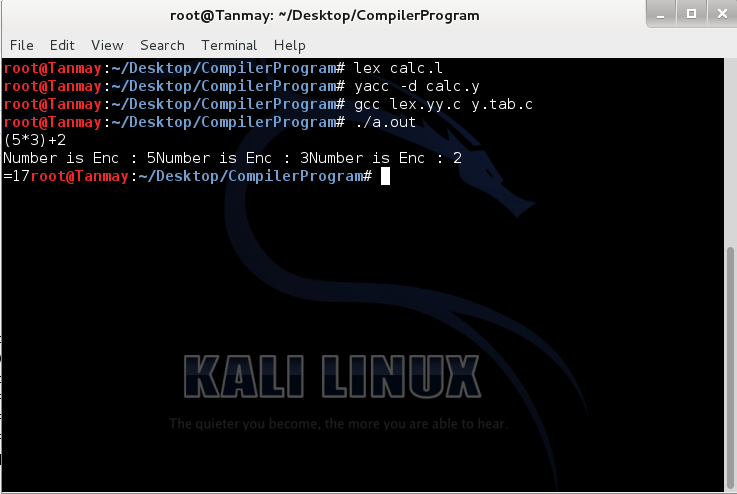
Lines 25 and 26 are important as they define what will be given to the parser when its instantiated and upon calls to yylex. Lines 14 through 21 are included because of a bug (perhaps feature) that removes this definition when %locations isn't used. On line 8 the classes that are used within the parser are defined, think of this as a forward declaration. The namespace that we want this parser to use is defined on line 5 along with the parser class on line 6 (Note: its usually a good idea to have a unique namespace and a parser name so when you have multiple parsers they can be kept very distinct). There's a bit of new syntax which is the reason for the version differentiation. We then include the required version of Bison (for this example version 3.0+, however you can download an example that works with version 2.5 through 2.7 here: link). The first line declares that we want to use the lalr1 skeleton file (if you want to learn what types of skeletons are available, the documentation does a fairly good job going through them). Here is just a simple description of how to define the C++ parser.


This is extremely important, otherwise you will hit this section within the generated code, and get the default yylex() function (discussed in detail later).Įxactly how to write a language, and express it such that the parser can parse it is definitely beyond the scope of this tutorial, there are plenty of books on how to do this. This function signature must match that one (minus the virtual or other class header keywords). On line 7 you'll want to notice that the yylex function that is defined in the mc_scanner.hpp header file is declared as a #define with YY_DECL. Now that is largely done for you based on the token types which is much nicer. In the past you would manually have to define your own union. If you're interested in the details, see the Bison documenation (direct link). Bison now defines a template function to cast/create the proper objects for you, so this version of the tutorial uses this more modern construct. In previous versions of this tutorial I'd added a macro to create actual string objects from the char string yytext.

Next you'll see a using statement included simply to make the namespacing a bit shorter to type when returning tokens. The scanner header file (line 6) is included, which we'll talk about next, extends yyFlexLexer found in FlexLexer.h. On line 3 the C++ string header file is included since we use it within this code.


 0 kommentar(er)
0 kommentar(er)
